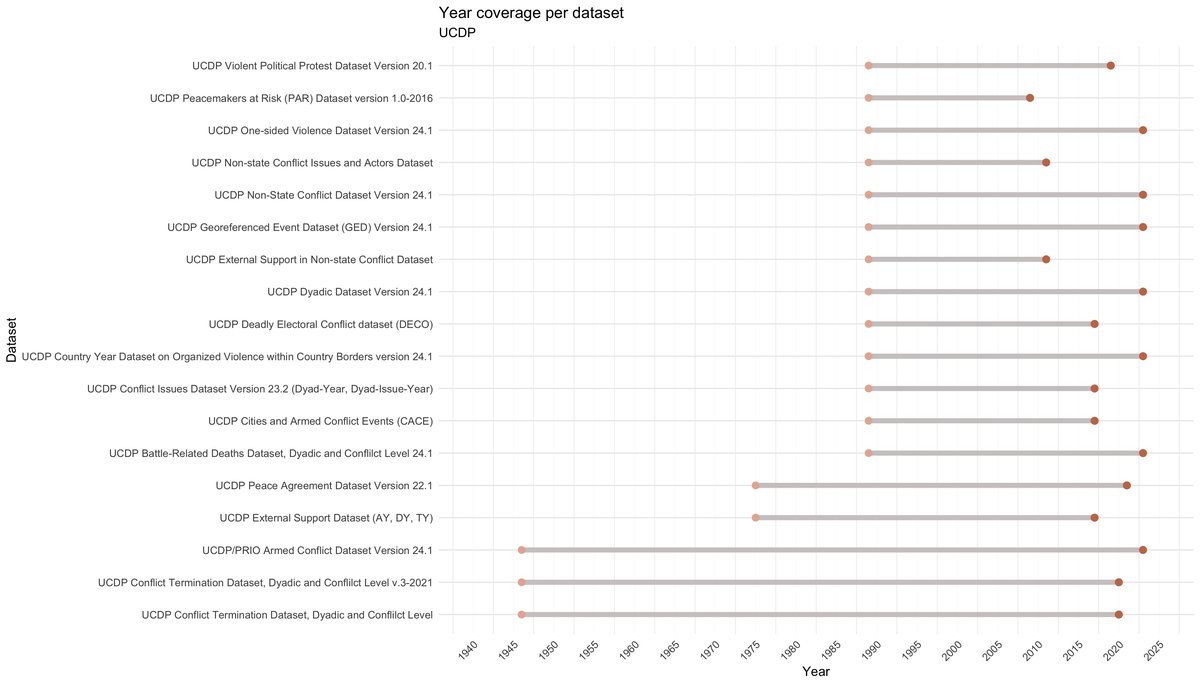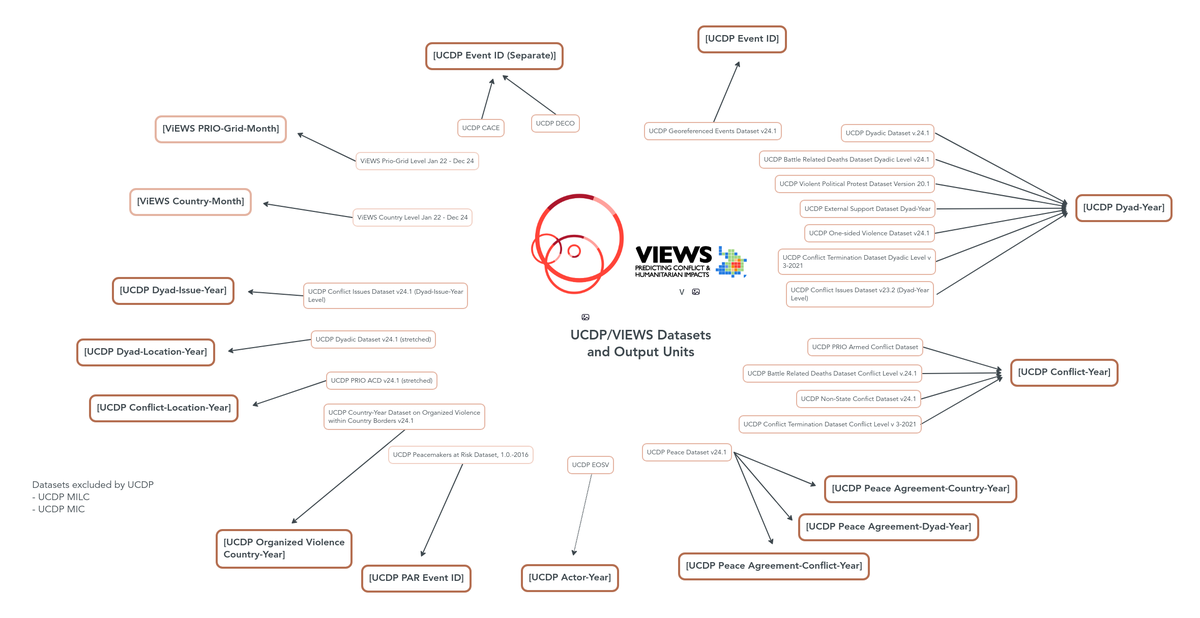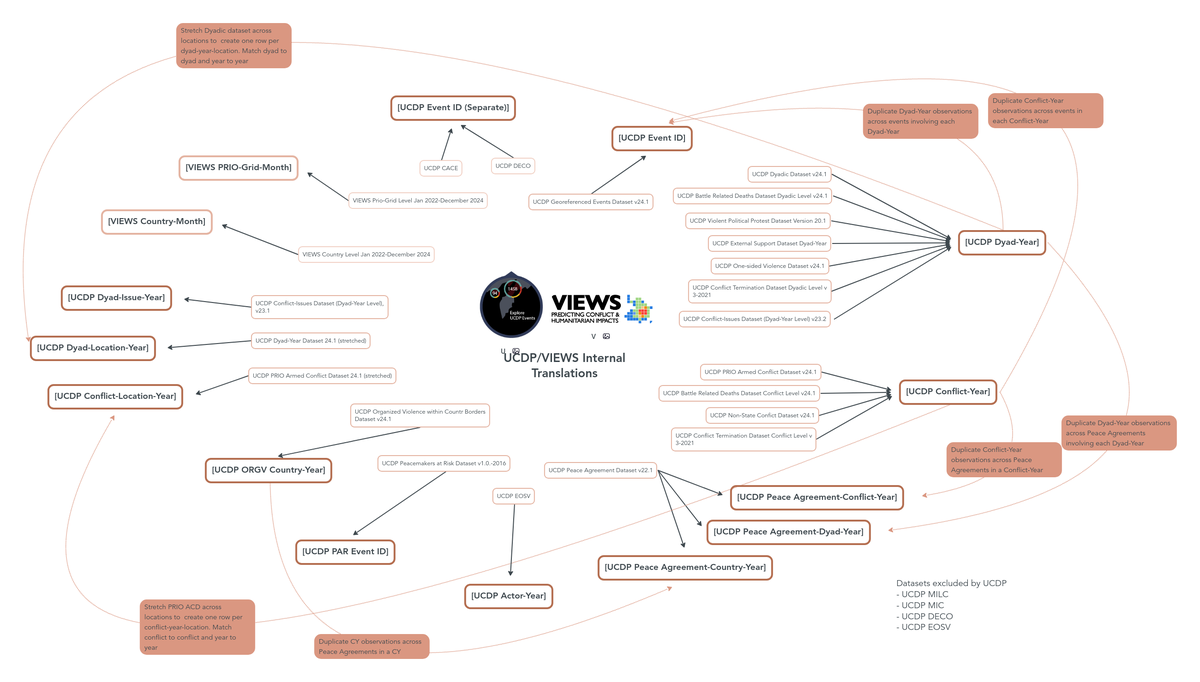VIEWS is an ambitious early-warning system at the frontier of research on conflict forecasting.
The open-source tool is continuously developed, tested and iteratively improved, resulting in frequent releases of new models and versions thereof. The forecasts are among others based on the monthly published UCDP Candidate Events Datasets and provide continuous predictions of the number of fatalities in impending conflict, and probabilistic dichotomous (conflict/no conflict) forecasts based on the former.
VIEWS forecasts are presented at two levels of analysis, the country-month level and sub-national PRIO-GRID-month level.
The country-month level uses the calendar month as the temporal unit of analysis and countries as the spatial unit. The set of countries is derived from the Gleditsch & Ward (1999) list of independent states, while their geographic extent (and country IDs) are determined by the GIS dataset CShapes v.0.6 ( Weidmann, Kuse & Gleditsch, 2010).
The PRIO-GRID-month (pgm) level uses calendar months as the temporal units of analysis, and spatial units derived from PRIO-GRID 2.0 ( Tollefsen, Strand & Buhaug, 2012). The latter is a standardized spatial grid structure consisting of quadratic grid cells that jointly cover all areas of the world at a resolution of 0.5 x 0.5 decimal degrees, approximately 55×55 km around the equator.
The current model is known as the fatalities model. For each month in a 3-year forecasting window, it generates predictions for the number of fatalities in impending conflict, as well as dichotomous forecasts for the probability of at least 25 battle-related deaths (BRDs) per country-month and at least 1 BRD per PRIO-GRID-month.
Changes to the fatalities model over time are documented in our version-tagged source code on GitHub, where the complete model documentation is accompanied by a written model changelog.





